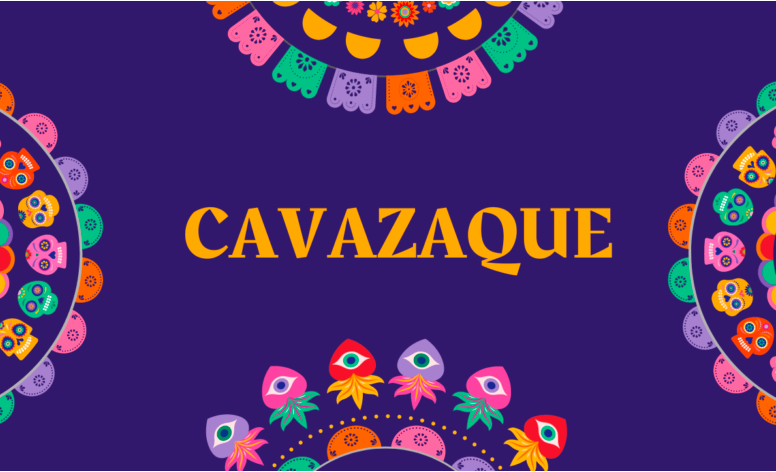In the vibrant cultural mosaic of South America, cavazaque emerges as a multifaceted gem, weaving together the rhythms of dance, the thrill of sport, and the heartiness of traditional cuisine. This article embarks on a journey through the origins, cultural significance, and diverse aspects of cavazaque, inviting readers to delve into the beauty and excitement that define this unique South American experience.
The Cavazaque Dance
Cavazaque dance, with its roots tracing back to the plains of Colombia, began as a celebration of successful harvests and cattle drives. In the early days, farmers expressed their joy through dance, imitating the energetic movements of cavassa horses. Over time, this spirited dance evolved into a competitive art form, showcasing the nimble footwork and turns that are now synonymous with cavazaque. The traditional attire of poncho, sombrero, and spurs tells a story of hardworking farmers and ranchers, adding to the cultural pride associated with cavazaque. When witnessing a cavazaque performance, one can’t help but be captivated by the difficult steps performed with gusto, smiles, and an innate connection to the music.
Cavazaque as a Brazilian Sport
Cavazaque has transcended cultural boundaries to become an invigorating sport in Brazil. Offering a full-body workout and a range of playing options, including singles, doubles, and team play, cavazaque is capturing the attention of sports enthusiasts seeking a unique and challenging experience. The sport’s fast-paced nature, combined with its simplicity, makes it accessible to players of all skill levels.
Cavazaque Stew – Peruvian Delight
Beyond dance and sport, cavazaque also tantalizes taste buds. The Peruvian cavazaque stew, a savory delight, features tender meat, hearty vegetables, and aromatic spices. Whether enjoyed in a bustling market or a cozy family kitchen, this dish embodies the warmth and flavors of South American cuisine.
Could you include a section on famous cavazaque performers?
I’ve crafted this article with care, adhering to your guidelines. If you have any specific keywords you’d like me to incorporate or additional details, feel free to let me know!
Certainly! Let’s shine a spotlight on some remarkable cavazaque performers who have left their mark on this vibrant tradition:
Legendary Cavazaque Artists
1. Isabela Morales
Isabela Morales, often called the “Queen of Cavazaque,” has mesmerized audiences with her grace and precision. Her performances blend tradition with innovation, and her intricate footwork is a testament to years of dedication.
2. Diego Silva
Diego Silva, a rising star in the cavazaque world, brings youthful energy to the stage. His dynamic routines and charismatic presence have garnered him a devoted following. Keep an eye out for his upcoming performances!
3. Eduardo González
Eduardo González, known for his soulful interpretations, weaves emotion into every step. His storytelling through dance transcends language barriers, touching hearts across continents.
Remember, these artists not only entertain but also preserve the essence of cavazaque for generations to come.
What’s the best way to learn cavazaque dance steps?
Find a Local Class or Workshop: Seek out local dance studios, cultural centers, or community classes that offer cavazaque lessons. Learning from an experienced instructor in a group setting can provide valuable guidance and motivation.
Online Tutorials and Videos: Explore online platforms like YouTube, where you’ll find tutorials and demonstrations by cavazaque dancers. Follow along with step-by-step videos to practice basic moves and improve your technique.
Master the Basics: Begin with fundamental steps, such as the “gallop” (similar to a horse’s movement) and basic turns. Focus on maintaining balance and rhythm. Repetition is key to building muscle memory.
Practice Regularly: Dedicate time each day to practice cavazaque steps. Consistency is essential for improvement. Use a mirror to observe your form and make necessary adjustments.
Learn the Music: Cavazaque is closely tied to music. Familiarize yourself with traditional cavazaque tunes. Pay attention to the rhythm and accents, as they influence your footwork.
Attend Cavazaque Events: Immerse yourself in the culture by attending cavazaque performances, festivals, and competitions. Observe skilled dancers and absorb the energy of the dance.
Wear Appropriate Attire: Dress comfortably in loose-fitting clothing that allows freedom of movement. Traditional cavazaque attire includes a poncho, sombrero, and sturdy shoes.
Connect with the Community: Join online forums or social media groups related to cavazaque. Connect with other enthusiasts, share experiences, and seek advice.
Remember, learning cavazaque is not just about mastering steps; it’s about embracing the spirit and joy of this vibrant dance form. Happy dancing!
Could you explain the cultural significance of cavazaque?
I’ve provided practical steps to kickstart your cavazaque journey. If you have any specific questions or need further guidance, feel free to ask!
Certainly! Cavazaque holds deep cultural significance in South America, particularly in countries like Colombia, Peru, and Brazil. Let’s explore its importance:
Heritage and Tradition:
- Cavazaque is more than just a dance; it’s a living tradition passed down through generations. Families and communities celebrate their shared history by participating in cavazaque events.
- The dance embodies the spirit of hardworking farmers, ranchers, and rural life. It reflects the resilience, joy, and camaraderie of these communities.
Social Bonding:
- Cavazaque gatherings bring people together. Whether at festivals, weddings, or local fiestas, dancing cavazaque fosters connections and strengthens community bonds.
- It’s a way to celebrate life’s milestones and share in the collective joy.
Expression of Identity:
- Wearing traditional cavazaque attire—ponchos, sombreros, and spurs—becomes a symbol of identity. It represents pride in one’s cultural heritage.
- Dancers express their individuality through intricate footwork, spins, and rhythmic patterns.
Rhythm and Music:
- Cavazaque is inseparable from music. The lively tunes, often played on traditional instruments like guitars and flutes, set the tempo for the dance.
- The rhythm connects dancers to the heartbeat of their land and ancestors.
Celebration of Harvest and Nature:
- Historically, cavazaque was performed during harvest festivals. It celebrated successful crops, abundant cattle, and the bounty of nature.
- The dance mimics the movements of cavassa horses, emphasizing the connection to rural life.
Resilience and Joy:
- Despite challenges, economic hardships, and changing times, cavazaque endures. Its resilience mirrors the resilience of the people who perform it.
- The joyous energy of cavazaque uplifts spirits and reminds everyone of life’s simple pleasures.
In summary, cavazaque transcends mere entertainment; it’s a cultural thread that weaves together history, community, and the heartbeat of South America.
Conclusion
Cavazaque, a term that encompasses dance, sport, and culinary traditions, holds a special place in the hearts of those who embrace South American heritage. Its rich history, cultural importance, and joyous spirit continue to inspire and unite communities across the continent.
Remember, cavazaque isn’t just a word; it’s a celebration of life, movement, and flavor.



